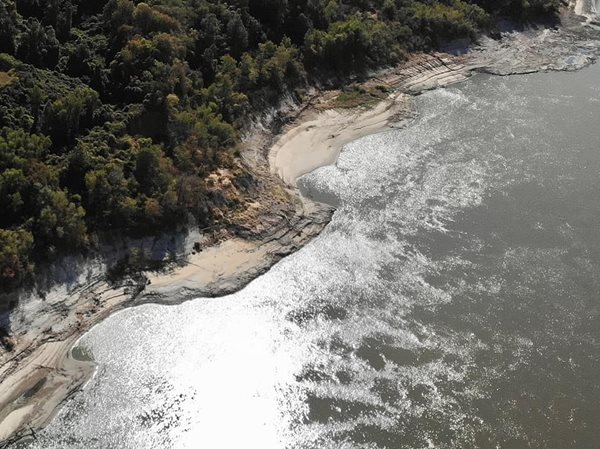Since September, the Mississippi River has been at its lowest level in at least a decade.
The sights and the effects of the lack of water are apparent for nearly the whole length of the largest waterway in America. Even in Minnesota at the river's headwaters, they've just experienced their driest September on record.
At Cairo, nearly half of the normal river bottom is dry, and the channel is only about five feet deep.
Cairo's water utility this week decided for the time being to stop using river water, and changed to a groundwater well as a more dependable source for its customers.
Further upstream at Chester, people are literally walking across the Mississippi to get to local landmark Tower Rock, which is normally surrounded by water. Grandchildren are being taken on the hike by grandparents who have only had one or two opportunities for the trip over the decades themselves.
People walking on formerly submerged river bottoms in Missouri and Mississippi have found cars that have been missing for decades. In Baton Rouge, a treasure hunter noticed two timbers jutting out of the mud that turned out to be part of the S.S. Brookhill, a ferry boat that sank in 1915.
In Paducah, the Ohio River isn't quite as low, so it's where the cruise ship American Duchess rerouted for two days because it couldn't make it down the Mississippi.
The biggest effect in terms of dollars is the massive loss to the shipping industry, and to farmers and corporations trying to get their products to market.
At places on the Mississippi near Memphis and Vicksburg, more than 2,000 barges are waiting for their turn to ease through whatever navigable channels are still open.
Those that can run have been forced to carry half loads, and smaller groups of barges at a time. This dramatically increases the cost to ship each ton of cargo, adding to already familiar inflation and supply chain woes.
The timing is especially crucial for thousands of corn and soybean farmers whose crops are coming out of the fields right now.
According to the Upper Mississippi Waterway Association, a single barge can haul as much cargo as 16 rail cars or 70 trucks. That advantage is lost when loads are lightened to maintain a shallow draft.
The US army Corps of Engineers is currently working on deepening the final leg of the Mississippi River from Baton Rouge, Louisiana to the Gulf of Mexico.
They're also constructing an earthen barrier at the mouth of the river, because the low water flow is allowing salt water from the Gulf of Mexico to encroach into the river channel, threatening the quality of water supplies for residents.
The Mississippi River valley is only the eastern edge of a drought that covers more than half of the continental United States.
The drought is a far cry from the same area in late July, when nine inches of rain fell into the Mississippi River in a single day at St. Louis.
Local weather projections still call for drier-than-normal weather for the next few weeks.
Photos courtesy Ohio Valley Aerial - more photos available on their Facebook page
Advertisement
Historic low river levels affect shipping, farming, cities
Advertisement
Latest Local & Regional
Local & Regional
2 hours ago
Local & Regional
2 hours ago
Local & Regional
9 hours ago
Local & Regional
17 hours ago
Local & Regional
yesterday
ADVERTISEMENT
Most Read >
ADVERTISEMENT
Latest Local & Regional
Local & Regional
2 hours ago
Local & Regional
2 hours ago
Local & Regional
9 hours ago
Local & Regional
17 hours ago
Local & Regional
yesterday
Advertisement
ADVERTISEMENT







